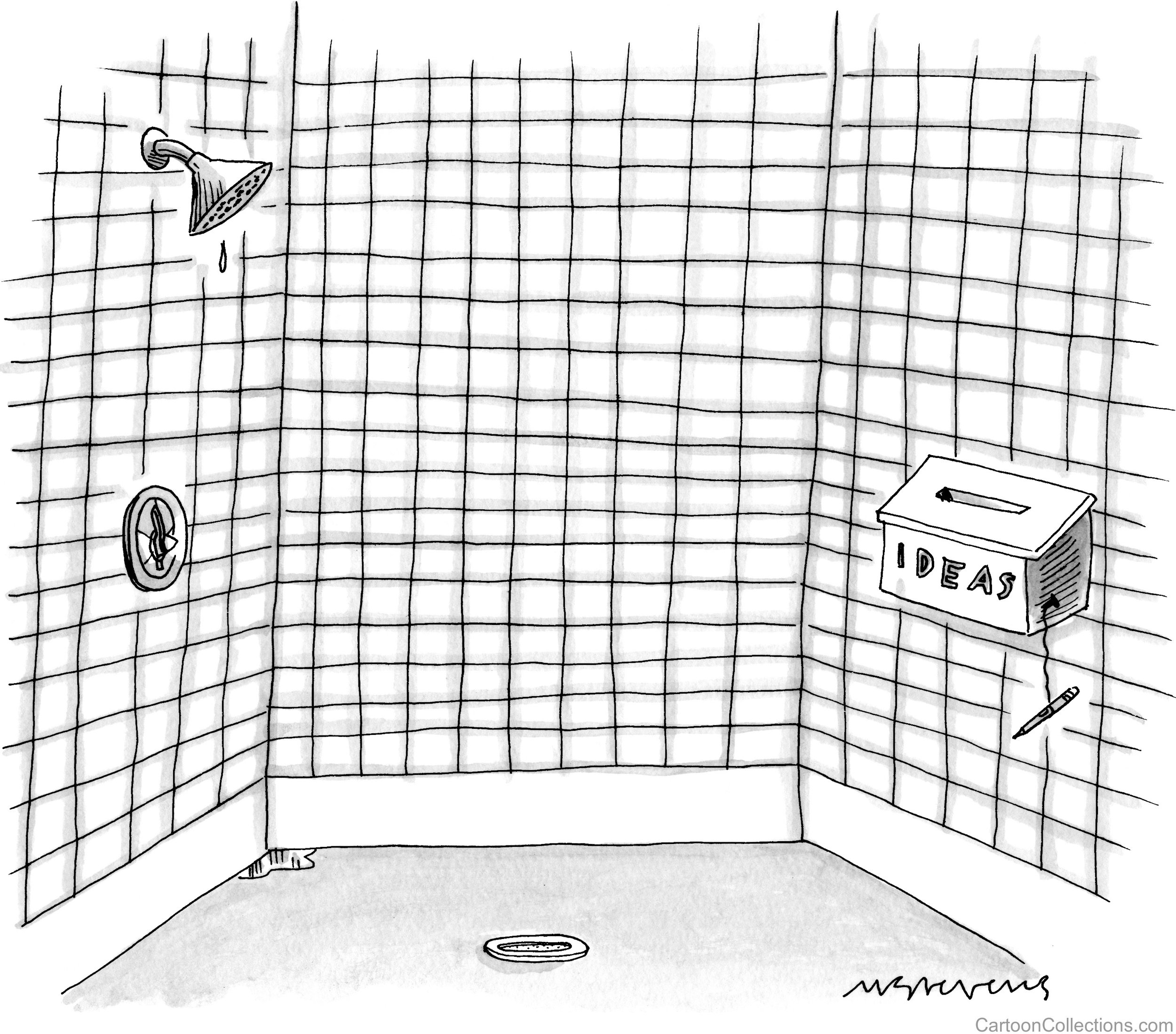Why is This Funny? Because it’s True!
A shower stall, with a box marked “ideas” for recording thoughts
Every time I show an audience this cartoon I get a laugh. Why? It’s a laugh of recognition. We don’t usually talk about it, but most of us have had the experience of getting a bright idea when we are in the shower, when we are walking or running, when we are waking up or drifting off to sleep—in other words, when we are in our bodies. Of course you can have a brainstorm sitting at your desk, but when I ask people when and where they get their best ideas, they almost never answer that they come at their desk or at their computer.
As I’ve said before, we are embodied thinkers—we think with our hands, our whole bodies, and our immediate environments, not just with the contents of our skulls. We are not brains in vats. Instead, we are deeply connected to our bodies, our tools, and our close surroundings. Sensory experience informs and participates in our thinking. The commonly mentioned five senses—vision, hearing, touch, taste, and smell—are part and parcel of the “sense” we make of the world around us, but so are the “kinesthetic” senses of proprioception (our sense of the position of our body) and the vestibular sense which helps with balance and upright posture. Movement and the kinesthetic senses are generally neglected in college teaching, but they can be powerful aids to learning, as scholar Susan Hrach tells us in her book Minding Bodies: How Physical Space, Sensation, and Movement Affect Learning. Students are not brains on sticks, she argues, and should not be treated as such. “Sitting is the new smoking,” she quips.
I took this to heart some years ago when I bought a variable height desk, which allows me to stand or sit, and to move easily between the two, when I am at my computer. I have to use my computer far too much, but at least I can change position, and when I arrive in the morning at a standing desk I can feel my mood lighten. We are made to move, and adding movement to our thinking and learning environments can be inspiring.
What ideas might we have if we spent more time moving, showering, resting, walking in the woods? And what ideas will our students have if we get them moving, touching things, working with tools, getting outside? We’ll never know if we don’t try.

